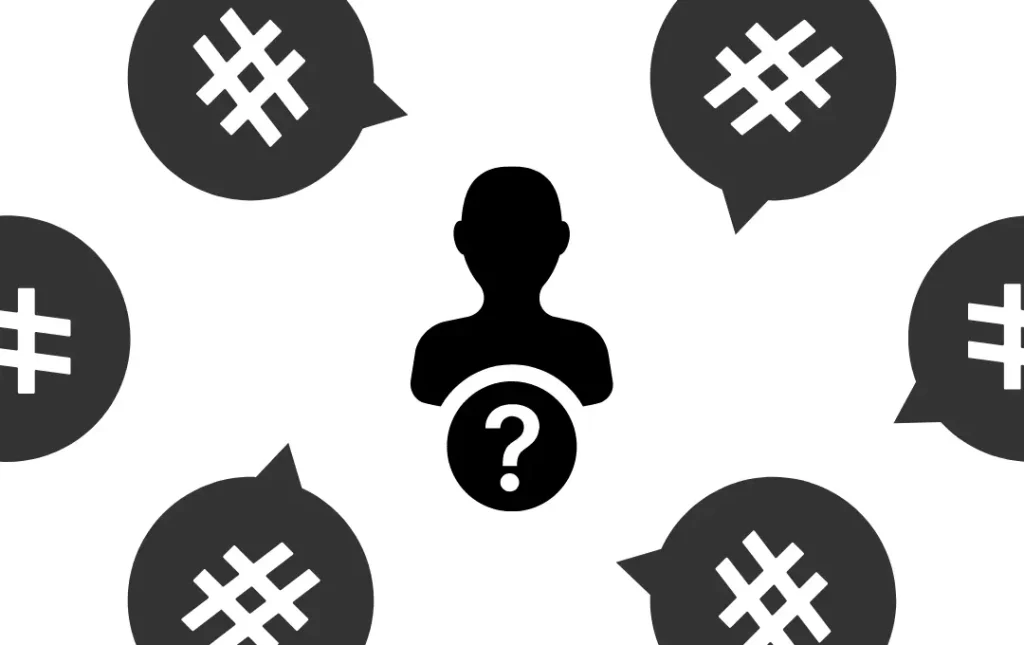![How to make a hashtag trend [on all social networks]](https://jethashtag.com/blog/wp-content/uploads/2023/08/Untitled-design-4-1.webp)
How to make a hashtag trend [on all social networks]
How to make a hashtag trend ? Social networks never sleep, and every day an abundance of content is uploaded on multiple social media platforms.
Take YouTube, for example, which is the largest video platform in the world. Over 500 videos are uploaded to this platform every minute.
YouTube and Facebook also consider the statistics of stories and show that over 1 billion pieces of content are shared on these platforms daily. Approximately 95 billion posts are shared on Instagram daily. These numbers indicate that there is tough and complex competition among marketers.
This competition can be challenging for small businesses and brands to stand out and advertise their products on each platform. I suggest you see the article on Instagram Tutorial: From 0 To 100 For Beginners.
But how can one succeed in this intense competition? Hashtags are one of the ways. But the question is, how can one make a hashtag prominent on different platforms?
Who used the hashtag first?


The lifespan of social media hashtags is approaching a decade. The first hashtag was used by a product designer named Chris Messina, who talked about it. The main objective behind this idea was to categorize specific topics to create meaningful conversations about them.
Hashtags were initially introduced on Twitter and gradually evolved into a hidden weapon for boosting posts on multiple social media platforms.
Nowadays, hashtags are an effective way to make posts more discoverable on social networks. It is a fact that hashtags have the power to go viral across all social media platforms.
What is the use of hashtags in social media?
When using social media for marketing, hashtags are the key to unlocking the power of social media and ensuring that your content reaches the right audience.
Try using our Hashtag Generator tool
They serve as a unified storefront for finding content related to a specific topic or event. You’ve seen them everywhere: in your favourite TV shows, in your favourite books, and of course, across social media platforms. From Twitter to Instagram, hashtags are used to categorize, organize, and promote content.
These symbols hold significant power as they can help you reach new audiences, increase engagement, and build relationships with your followers.
Whether you like it or not, hashtags have become a part of the social media landscape and have a longer lifespan. You can create an engaging caption with social media hashtags and include the relevant hashtag. This helps users to explore a wide range of related content when they click on a specific hashtag.
For example, if I create a social media post for a business, I will use relevant hashtags such as #socialmedia or #socialmediamarketing to make my post more discoverable.
Therefore, when someone searches for social media or marketing content, my posts appear in their search results.
The best part is that hashtags have the power to amplify your reach. According to research, tweets with relevant hashtags are twice as likely to be seen compared to tweets without hashtags. A proper hashtag can lead to a successful marketing strategy on social networks, while an incorrect hashtag can even harm your brand’s credibility.


How to Use Hashtags in Social Media
Hashtags are small symbols that can make or break a post. They are essential for any social media post, whether you’re aiming to increase engagement, reach a wider audience, or make your content discoverable.
However, with the abundance of hashtags to choose from, knowing which ones to use can take time and effort. So, let’s explore how to use hashtags in social media.
Keep it Simple and Relevant
Choosing social media hashtags can be tricky. You want to use them to grab attention to your posts, but you don’t want to overdo it. Having too many hashtags can make your post appear spammy and unprofessional.
So, how do you strike the right balance? The answer is to keep your hashtags simple. Just a few simple hashtags can significantly affect how your post is perceived.
This approach helps ensure that the right people see your content and that your post appears more professional. The key is to keep your hashtags simple and relevant to your audience.
Don’t Overuse Hashtags
What do you do if you’ve scrolled through social media feeds and come across a post with excessive hashtags? You’ll scroll right past it because it may seem unprofessional or annoying.
Hashtags are indeed an effective way to promote your content. However, there’s a fine line between using and overusing them on social media.
If you use fewer, you avoid annoying your followers. Two or three hashtags in a post are sufficient. Using an excessive number of hashtags can result in a cluttered and confusing post for your followers and can even be perceived as spam.
Research Your Hashtags
We can all agree that hashtags are essential to social media marketing. They can help you get noticed, increase engagement, and build your brand. But before you start using hashtags, it’s crucial to do a bit of research. After all, if using a hashtag doesn’t help you achieve your goals, it’s not beneficial.
So, it’s important to research it. When researching hashtags, consider the following:
- How frequently have other users used it?
- How many posts are using the hashtag?
- Any potential associations the hashtag may have.
It’s also important to ensure that the hashtag is not used negatively or misled. Additionally, check if the social media hashtags have any trademark or copyright restrictions to avoid legal issues.
Be Specific
With the abundance of hashtags, knowing which ones to use can be challenging. The key is to be specific. Think about what your post is about and who your target audience is. Then, create a hashtag that is descriptive and relevant to your content.
Your post will not stand out if you use generic hashtags like #cooking or #movies. However, using more specific hashtags like #quickcooking, you can target a more engaged audience and receive more likes and comments.
How to Trend a Hashtag?
Knowing how to create a hashtag that can trend and go viral is one way to have a remarkable impact on your campaign, event, or special promotions, find leads, increase brand awareness, and more. But what does it take to create a widespread hashtag?
Step 1: Create a Short Hashtag
Hashtags should be simple enough. Don’t be afraid to be creative, but keep it simple enough for your audience to easily repeat and reuse.
Step 2: Make it Readable
If your hashtag is difficult to read, users will easily overlook and dismiss it. Ensure that your hashtag is easily readable and understandable.
Step 3: Consider All the Negative Possibilities
Choose a hashtag to ensure your company won’t get caught up in inappropriate associations. Check ongoing events and recent trends to avoid any potential mishaps.
Step 4: Avoid Using Too Many Hashtags in a Single Post
It may be tempting to try and reach the widest possible audience using 20 different hashtags besides your own. However, many hashtags come across as spam. Only use hashtags that are relevant to your content. Additionally, some platforms have strict limitations.
Step 5: Research Other Hashtags When Using Them
Some hashtags seem generic and applicable to anything. This makes them adaptable, but it also makes them prone to misuse. Therefore, it’s important to research before using pre-existing hashtags.
Step 6: Create Your Own Branded Hashtag
It’s common for companies to use existing hashtags. This helps new and larger audiences discover your content, and you don’t have to start building a user hashtag list from scratch. However, if you’re launching a larger-scale marketing campaign that is (to some extent) supported by a hashtag, take the time to create a custom hashtag that people will associate with your brand.
Step 7: Create an Actionable Hashtag
The whole purpose of creating a hashtag is to create buzz. The best way to do this is by inspiring action. Hashtags that engage people and motivate them are highly effective.
Step 8: Brainstorm Your Branded Hashtags
Now it’s time to think about the phrase behind your hashtag. Do you have a slogan for your marketing campaign that you can use as your hashtag?
However, if your hashtag campaign focuses on a smaller aspect of your overall campaign, you may want to offer something different. Your hashtag doesn’t have to be a branding masterpiece or a brilliant combination of wit and creativity. It just needs to support your message. Make sure your hashtag aligns with the core theme of your campaign.
Step 9: Promote your hashtag
Inform people about your hashtag. Write about it on your social media channels, use it in newsletters, on your blog, and even in customer communications. If people are unaware of your hashtag, they won’t be able to use it, so tell them about it. If you want it to become a trend, your unique hashtag should be visible everywhere in the true sense of the word.
Step 10: Engage in conversations using your hashtag
When people start using your hashtag, join the conversations. If you come across user-generated intelligent content, show appreciation in your response. You can also feature user-generated content on designated landing pages for your hashtag or in a social media feed. Seeing examples of creative content generated by users encourages more people to use the hashtag.
Step 11: Monitor your hashtag
Hashtags are not limited to just Twitter, Instagram, or Facebook. People can use hashtags across platforms, forums, comments, and blogs. There are no limitations to the online usage of your hashtag. This versatility allows your audience to participate in conversations from all corners of the world. While this can create more creative and engaging conversations than you anticipated, the fact that they are happening across platforms can make tracking them challenging.
in the end
Creating a hashtag that can become a trend takes work but is achievable. Make sure to stay updated and, on the one hand, create enduring and simple hashtags. If you dedicate time to this endeavour and ultimately create a trending and lasting hashtag even once, you can leverage its benefits in your marketing discussions for a long time.
